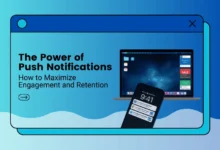SEO Poisoning in Enterprise SaaS: What is the Goal?

In the dynamic realm of enterprise Software as a Service (SaaS), carving out a robust digital footprint is a sine qua non for businesses aiming to flourish. Central to this endeavor is the art of Search Engine Optimization (SEO), a strategic technique that fine-tune a website’s content and structure to secure a prominent position on search engine results pages.
However, a nefarious phenomenon lurks amidst the virtuous pursuit of enhancing online visibility – SEO poisoning. In this article, we delve into the intricacies of SEO poisoning and decipher its primary objectives within enterprise SaaS SEO. For the best strategies and tips for enterprise SaaS SEO, visit this website: https://www.fortismedia.com/en/seo-tips/enterprise-saas-seo/.
Defining the Enigma: Unraveling SEO Poisoning
Ever wondered why your web pages don’t show up in search results? Struggling to secure a top spot on the first page? You might be caught in the web of SEO poisoning. This is a sign for you to fix it.
At its core, SEO poisoning is an insidious act wherein malevolent actors compromise a website’s search engine ranking by conjuring pages or content that masquerades as authentic to search engines but are ingeniously designed to trap unwitting users into clicking on them. This intricate deception is often achieved through black hat SEO tactics, including but not limited to keyword stuffing, cloaking, and link injection.
Illuminating the Ambitions: Goals of SEO Poisoning in Enterprise SaaS SEO
The motives that drive SEO poisoning within the realm of enterprise SaaS SEO are manifold, but several dominant objectives emerge from the shadows:
Data Theft and Malware Propagation
The most prevalent objective is the subversion of confidential data or the propagation of malicious software. In a glaring example, malefactors might craft a webpage that mirrors the authentic login portal of an enterprise SaaS platform.
The unwary users who input their credentials unwittingly divulge sensitive information, which the attacker can exploit for unauthorized access. Alternatively, the weaponization of SEO poisoning might entail infecting users’ devices with malware, unleashing a cascade of perils ranging from data loss to identity theft and financial fraud.
Sowing Seeds of Competitor Disarray
A sinister negative SEO strategy comes into play, targeting rivals’ search rankings. This stratagem involves generating content and links that ostensibly align with a competitor’s website but are ingeniously designed to undermine their search engine standings.
A malefactor might concoct counterfeit social media profiles interlinking with a rival’s webpage through spam-riddled anchor text. The aftermath results in search engine penalization, unjustly blaming the victimized website for a glut of subpar backlinks.
Politicization and Social Manipulation
SEO poisoning finds an alarming application in the domain of political or social agendas. In this twist, attackers exploit the allure of hot-button issues, crafting deceptive content seemingly linked to specific causes.
These virtual trojan horses are poised to disseminate disinformation or propaganda, exploiting search engines’ vulnerability to distinguishing between legitimate and hateful content.
A Deeper Dive into Phishing
A preeminent goal of SEO poisoning lies in the art of phishing, an online scam wherein malevolent entities impersonate genuine websites or companies, coaxing unwitting visitors into surrendering sensitive information.
Through skillful SEO manipulation, visitors are secretly redirected to fraudulent websites bearing an uncanny resemblance to legitimate counterparts. The ruse culminates in the theft of personal data, which the malefactors wield for nefarious pursuits. Indicators of phishing can manifest in unusual surges in website traffic unaccompanied by corresponding conversion rates.
Tracing the Spectrum: From Spamming to Virus Propagation
The spectrum of SEO poisoning’s objectives widens further:
Spam Proliferation
Akin to spreading wildfire, SEO poisoning serves as a conduit for spam messaging. Malicious actors employ SEO poisoning tactics to amplify the reach of spam messages, counterfeit products, and substandard content.
The adverse impact is tangible, distorting search engine rankings and eroding the quality of search results. A sudden faltering in your enterprise SaaS SEO progress could be due to these insidious spammers disrupting your ranking trajectory.
Virus Dissemination
The potent toolset of SEO poisoning extends to the realm of viral proliferation. Attackers compromise the unsuspecting visitors by injecting malicious code surreptitiously into legitimate websites.
A single click on a link embedded in an infected webpage can precipitate the involuntary download of viruses, wreaking havoc on users’ systems. The consequences encompass data compromise, financial impropriety, and loss of digital integrity.
Unmasking the Deception: Detecting and Defending Against SEO Poisoning
Recognizing the telltale signs of SEO poisoning is arduous, given the intricacy of attackers’ techniques. However, vigilance and proactive measures can offer a semblance of security.
It’s important to be aware of warning signs such as sudden changes in traffic, unexpected drops in search rankings, and unusual search results. Regularly checking your website’s content and code for any abnormal changes is crucial. “If you suspect SEO poisoning has impacted your website, it’s advisable to consult dedicated enterprise SaaS SEO service providers for professional assistance.”
The Fortification Imperative: Safeguarding Against SEO Poisoning
Fortifying your website’s defenses against SEO poisoning is an imperative enterprise:
Harnessing Protective Shields
Implementing robust security measures, from SSL encryption to firewalls and intrusion detection systems, is non-negotiable. These bastions erect formidable barriers against potential attacks.
Systematic Vigilance
Regularly backing up a website and conducting thorough virus and malware scans are crucial to maintaining resilience. These measures quickly eliminate potential threats.Analytical Prudence
Keeping a watchful eye on your website’s analytical metrics and performance benchmarks is crucial. Early identification of anomalies can spell the difference between containment and calamity.
Conclusion
In summation, the specter of SEO poisoning looms ominously over the enterprise SaaS landscape. Its ambitions span a multifaceted spectrum, encompassing data theft, malware dissemination, negative SEO, and socio-political manipulation.
To protect themselves from the potential damage caused by SEO poisoning, businesses need to implement a comprehensive defense strategy that includes ongoing monitoring, strong security measures, and smart analysis. By taking these steps, companies can safeguard their digital presence and prevent any negative effects of this threat.






